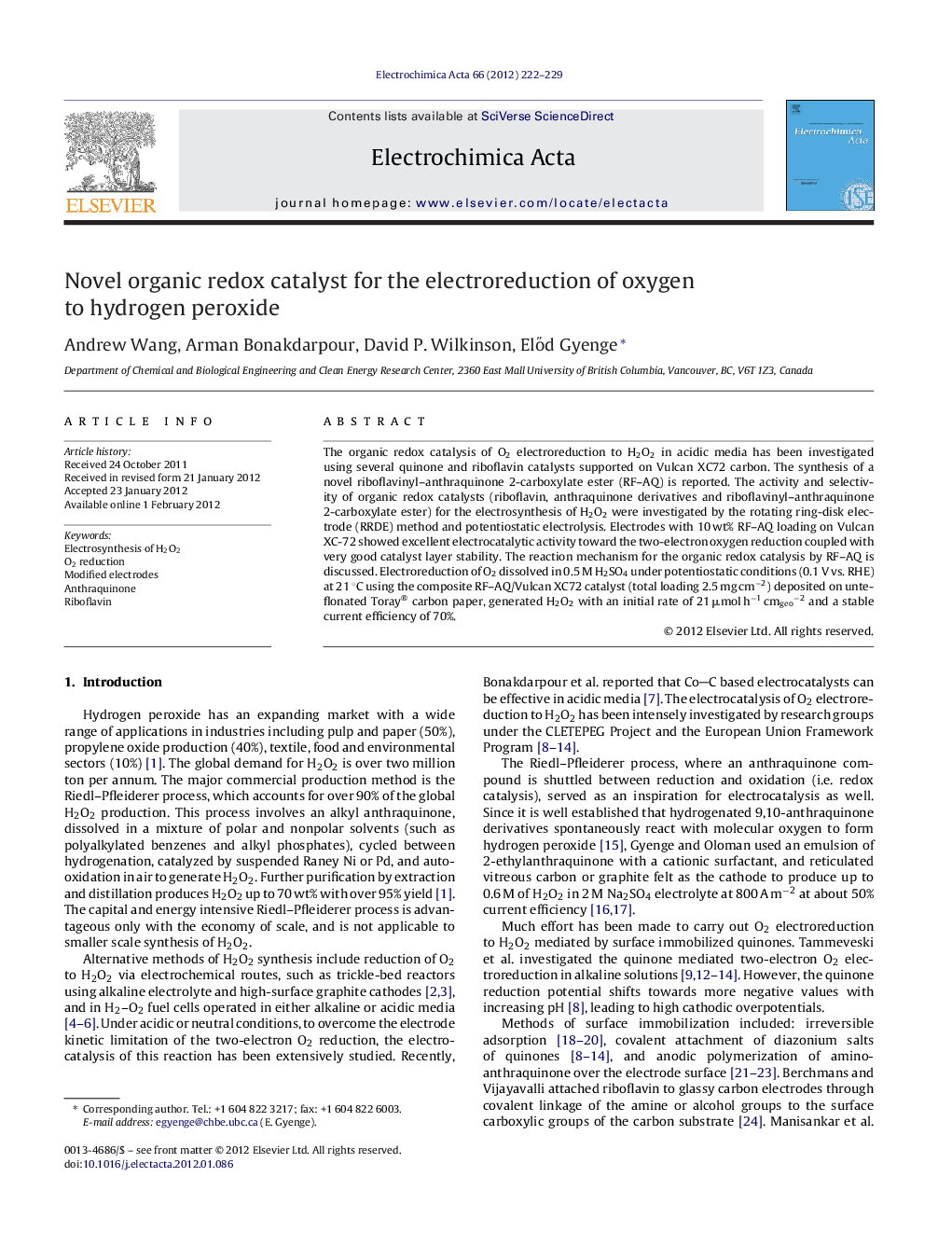| Article ID | Journal | Published Year | Pages | File Type |
|---|---|---|---|---|
| 188810 | Electrochimica Acta | 2012 | 8 Pages |
The organic redox catalysis of O2 electroreduction to H2O2 in acidic media has been investigated using several quinone and riboflavin catalysts supported on Vulcan XC72 carbon. The synthesis of a novel riboflavinyl–anthraquinone 2-carboxylate ester (RF–AQ) is reported. The activity and selectivity of organic redox catalysts (riboflavin, anthraquinone derivatives and riboflavinyl–anthraquinone 2-carboxylate ester) for the electrosynthesis of H2O2 were investigated by the rotating ring-disk electrode (RRDE) method and potentiostatic electrolysis. Electrodes with 10 wt% RF–AQ loading on Vulcan XC-72 showed excellent electrocatalytic activity toward the two-electron oxygen reduction coupled with very good catalyst layer stability. The reaction mechanism for the organic redox catalysis by RF–AQ is discussed. Electroreduction of O2 dissolved in 0.5 M H2SO4 under potentiostatic conditions (0.1 V vs. RHE) at 21 °C using the composite RF–AQ/Vulcan XC72 catalyst (total loading 2.5 mg cm−2) deposited on unteflonated Toray® carbon paper, generated H2O2 with an initial rate of 21 μmol h−1 cmgeo−2 and a stable current efficiency of 70%.
